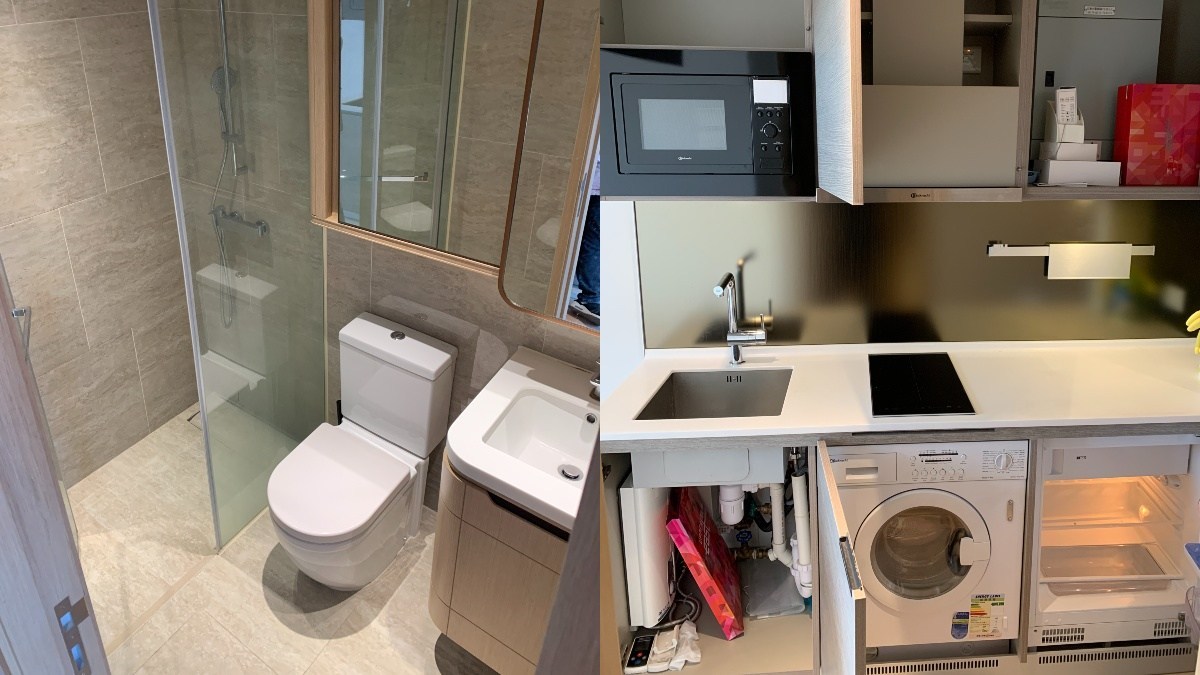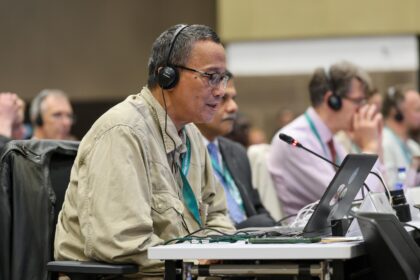[ad_1]
HONG KONG – A 200-square-foot apartment (18.6m2) is roughly the same size as a cramped motel room or two car parking spaces. But for many HongKongers, so-called nano-flats are a fact of life.Â
“It’s simply a place to sleep and bathe. My space is fully occupied by a bed, a small desk and a clothes cabinet,†said Brendon Siu, a 25-year-old graphic designer who moved into his 200-square-foot flat in To Kwa Wan in Kowloon last June.
In 2016, Siu bought the flat in a presale for HK$3.7 million (US$477,368), with his parents paying the first installment of HK$1.11 million (US$141,920).
While Siu appears to be a victim of rocketing property prices in Hong Kong, he is luckier than many of his peers who are forced to live with parents or in subdivided flats.
The city’s property affordability is the worst in the world, topping other housing hotspots such as Vancouver, Sydney and Los Angeles, according to a Bloomberg report.
Property prices in Hong Kong have doubled over the past decade. The Centa-City Leading Index, which tracks home prices, has climbed gradually from 88.4 in December 2010 to 190.48 in June 2019.
It eased to 175.88 at the end of last year due to the social unrest and pandemic but it was still 99% up from 10 years ago. Because many people could not afford even a small one-bedroom apartment, which costs more than HK$6 million (US$774,051), property developers have built thousands of “nano-flats†– small studio flats with toilets and pantries.Â
Between 2010 and 2019, 96 residential projects with 8,550 nano-flats were sold or pre-sold, according to a recent research report entitled “A decade of compression: Hong Kong nano-flats studyâ€Â published by Liber Research Community, a land concern group.
Newly built nano-flats increased by 85 times to 1,805 in 2019 from 21 in 2010, while the proportion of nano-flats to all apartments rose to 12.9% from 0.2% over the same period.
Minimum living space standards
The rise in these ultra-cramped quarters over the past decade has been driven in part by the business-friendly relaxation of the Fire Safety (Buildings) Ordinance and the Buildings Ordinance, which allow new apartments to have open kitchens and toilets without windows and inflates their areas by building balconies and glass curtain walls, Neon Yiu Ching-hei, a researcher at Liber Research Community, told Asia Times.Â
Yiu said property developers have leveraged these loosened regulations to build more and more nano-flats to maximize their profits. He said the Hong Kong government should set “minimum living space standards†to ensure that all new apartments are at least 260 square feet in size and are not subsequently cut and divided into studio flats that have no living and dining rooms.
According to the report, 95% of the nano-flats have no kitchen, 89% have no bedroom and 70% have what’s known as “dark toilets,â€Â which have poor ventilation and no window.
Among them, 2,002 were smaller than 200 square feet, while 41 were between 121 and 140 square feet. Deducting the area used for balconies and glass curtain walls, an official 194-square-foot apartment can actually only have 136.6 usable square feet.
“The government’s strategy of focusing on the number, not the quality, of the new apartments will not help solve Hong Kong’s housing problems,†Yiu said. “It’s meaningless if the housing supply target is met but living space is sacrificed.â€
Since 1997, the government’s Buildings Department has allowed property developers to build “dark toilets.â€Â In 2011, the department amended the Fire Safety (Buildings) Ordinance to also give the green light to open kitchens, which allow property developers to provide only small pantries, instead of full kitchens, and save space to build more apartments.Â
Hong Kong’s move to set a minimum size for apartments at 260 square feet will still mark a new global squeeze standard. The United Kingdom has set its at 398 square feet, Singapore at 500 square feet and Japan at 269 square feet, Yiu said.
In June 2018, Jimmy Ng Wing-ka, a Legislative Council member representing the business sector, suggested that the government consider a provision of “minimum flat area†or “maximum number of flats†in residential land leases, with a view to reversing the trend of shrinking new flats.
However, Michael Wong, the secretary for development, replied that the government would not set specific living space standards as its priority is increasing housing production to meet people’s basic accommodation needs.
Redevelopment projects
Land resources will remain scarce in Hong Kong within the next decade. Although the government has announced the site clearance and formation of about 70 hectares of land within the Lok Ma Chau loop in the New Territories North and a reclamation plan to create 1,700 hectares near the east coast of Lantau Island, these sites will not be able to solve the land shortage in the coming years.Â
Last November, Chief Executive Carrie Lam said the government had secured 330 hectares of land, mainly in the New Territories North, to build 301,000 public housing units in the next 10 years.
She said the government would continue to sell land and rely on the projects of the MTR Corp and the Urban Renewal Authority (URA) and private redevelopment projects to supply 129,000 private apartments to the market within the next decade.Â
However, many redevelopment projects, which involve the demolition of old tenement buildings in Kowloon and the New Territories, have led to the rise of nano-flats.Â
About 65% of Hong Kong’s nano-flats come from redevelopment projects, according to the Liber Research Community. More than 40% of all nano-flats are in Kowloon City, the Yau Tsim Mong and Sham Shui Po districts.Â
The URA, a public organization funded by the government, earlier sought to deter property developers from building ever-smaller apartments. From late 2014, it required project bidders to build apartments of not less than 260 square feet, but previously approved nano-flats continued to flood the market for the following five years. At the same time, many nano-flats were found in private redevelopment projects.Â
Between 2013 and 2019, Kowloon Development Company, a private property firm, redeveloped a Hung Hom site into an estate known as Upper East. Of its 1,008 apartments, 478 are reportedly smaller than 260 square feet.
According to an on-site inspection by Asia Times, a 194-square-foot studio flat with a sea view at Upper East is now priced at HK$4.2 million (US$541,935). A 217-square-foot flat with a balcony costs HK$4.3 million (US$554,723), while a 216-square-foot flat with a bedroom and a balcony is worth HK$4.4million (US$567,623). Â
Emperor’s bed
In July 2019, T Plus, a development at Tuen Mun and co-developed by Jiayuan International Group and Stan Group, sold a 128-square-foot apartment, the smallest ever in Hong Kong, for HK$1.73 million (US$223,193), or HK$13,577 (US$1,752) per square foot. Criticized for building such small flats, the property developers said at the time that “an emperor in the Forbidden City needs only a bed.â€
Chris Yip, an agent at Midland Realty, said most buyers at T Plus made a profit after one year. He said an investor bought a 131-square-foot flat there for HK$1.85 million (US$238,681) in 2019 and made an after-tax profit of HK$500,000 (US$64,508) last year.
Suki Wong, another property agent who works in the Ho Man Tin district, told Asia Times that more than 60% of buyers acquired nano-flats for investment rather than living purposes, while many others did so with the support of their parents.
Terence Chong Tai-Leung, an associate professor of economics at the Chinese University of Hong Kong, said the rise of nano-flats was a reflection of strong demand and limited land supplies.
However, he expected demand for these flats would gradually fall after the Hong Kong government announced in late 2019 a raise in caps on the value of the properties under the Mortgage Insurance Programme of the HKMC Insurance Ltd.
The maximum value of properties eligible for insurance coverage for mortgage loans with a 90% loan-to-value ratio borrowed by first-time home buyers was raised from HK$4 million (US$516,045) to HK$8 million (US$1.03 million).
The maximum value of properties eligible for insurance coverage for mortgage loans with 80% LTV ratio was, meanwhile, raised from HK$6 million (US$774,067) to HK$10 million (US$1.29 million).Â
That’s not yet deterring buyers and speculators. Earlier this month, Wheelock Properties sold 80 apartments at its new residential project known as Monaco Kai Tak Harbour in Kowloon.
Among them was a 280-square-foot studio flat that sold for HK$5.96 million (US$768,914), or HK$21,307 (US$2,749) per square foot. It has remained a luxury for many local buyers in Hong Kong.
To address the housing problems, the government should continue to step up its efforts to boost land supply and build more public housing units in the long run, Chong said.Â
[ad_2]
Source link













